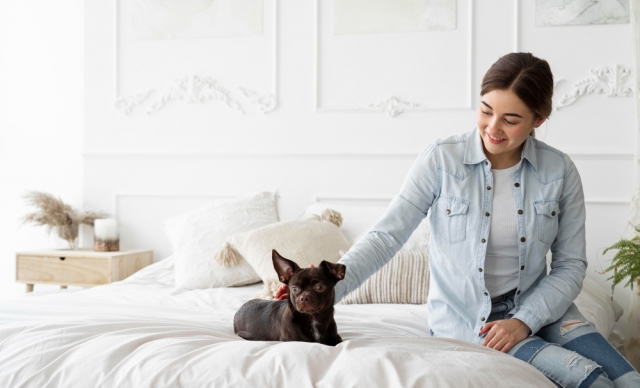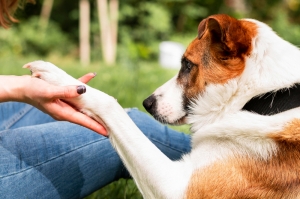Training your dog to use a dog bed is an essential part of establishing boundaries and promoting good behavior. Whether you have a new puppy or an adult dog, the following steps will help you successfully train them to use their designated bed.
Choose the Right Dog Bed
Selecting the appropriate dog beds is the first step in successful training. Consider the following factors:
- Size: Ensure the bed is large enough for your dog to lie down comfortably and stretch out.
- Material: Choose a bed with comfortable padding and a washable cover for easy maintenance.
- Location: Place the bed in a quiet, comfortable area where your dog can rest undisturbed.
Step 1: Familiarization
- Encouraging Exploration: Place the bed in a familiar area where your dog spends time, such as the living room or bedroom.
- Positive Association: Encourage your dog to investigate the bed by placing treats or toys on it.
Step 2: Positive Reinforcement
- Rewarding Interest: When your dog shows interest in the bed or approaches it, praise and reward them with treats.
- Verbal Cues: Use positive verbal cues like “bed” or “go to your bed” to associate the command with the action.
Step 3: Mealtime Association
- Mealtime Training: Place your dog’s food bowl near the bed or on the bed itself during meals to create a positive association.
- Consistency: Use mealtime training sessions to reinforce the bed as a positive and rewarding place.
Step 4: Bedtime Routine
- Bedtime Training: Encourage your dog to use the bed at night by leading them to it before bedtime and providing a treat or toy as a reward.
- Repetition: Repeat the bedtime routine consistently to establish a predictable sleep pattern.
Step 5: Rewarding Use
- Immediate Reward: When your dog voluntarily lies down on the bed, immediately praise and reward them with treats or verbal praise.
- Consistency: Reinforce positive behavior consistently to strengthen the association between the bed and reward.
Step 6: Redirect Undesirable Behavior
- Gentle Redirecting: If your dog tries to leave the bed or go elsewhere, gently guide them back to the bed and encourage them to stay.
- Avoid Punishment: Avoid using punishment or negative reinforcement, as this can create fear or confusion.
Step 7: Patience and Persistence
- Time and Patience: Training takes time, so be patient and consistent with your efforts.
- Adjustment: If your dog continues to resist using the bed, reassess the location, size, or type of bed to better suit their preferences.
Step 8: Reinforcing Boundaries
- Consistent Boundaries: Maintain consistency in allowing your dog on the bed or furniture to reinforce the use of their designated bed.
- Clear Signals: Use clear cues to differentiate between acceptable and unacceptable resting areas.
Step 9: Gradual Transition
- Gradual Transition: Gradually increase the duration your dog spends on the bed before offering rewards, encouraging longer stays over time.
- Comfort and Security: Ensure the bed remains a comfortable and safe place for your dog by regularly cleaning and replacing bedding as needed.
Step 10: Consistent Training
- Ongoing Training: Continue to reinforce bed training throughout your dog’s life to maintain good behavior and reinforce positive habits.
- Adaptability: Adjust training techniques based on your dog’s age, breed, and individual preferences for optimal results.
Train Your Dog to use Dog Bed
Training your dog to use a dog bed requires patience, consistency, and positive reinforcement to establish the bed as a comfortable and safe space for rest. By choosing the right bed, introducing it positively, establishing routines, using positive reinforcement techniques, addressing challenges with patience, and maintaining consistency, you can successfully train your dog to use their designated bed.
This process not only promotes good behavior but also strengthens the bond between you and your furry companion, ensuring they have a cozy and comforting place to relax and sleep.
Remember, every dog is unique, so adapt training methods to suit your dog’s temperament and preferences for the best results. With dedication and a positive approach, you can effectively train your dog to enjoy and use their bed, providing them with a sense of security and a designated space they can call their own.






